Who Was Elizabeth Spreadbury?
A short biography by Jim Grozier
Early Life
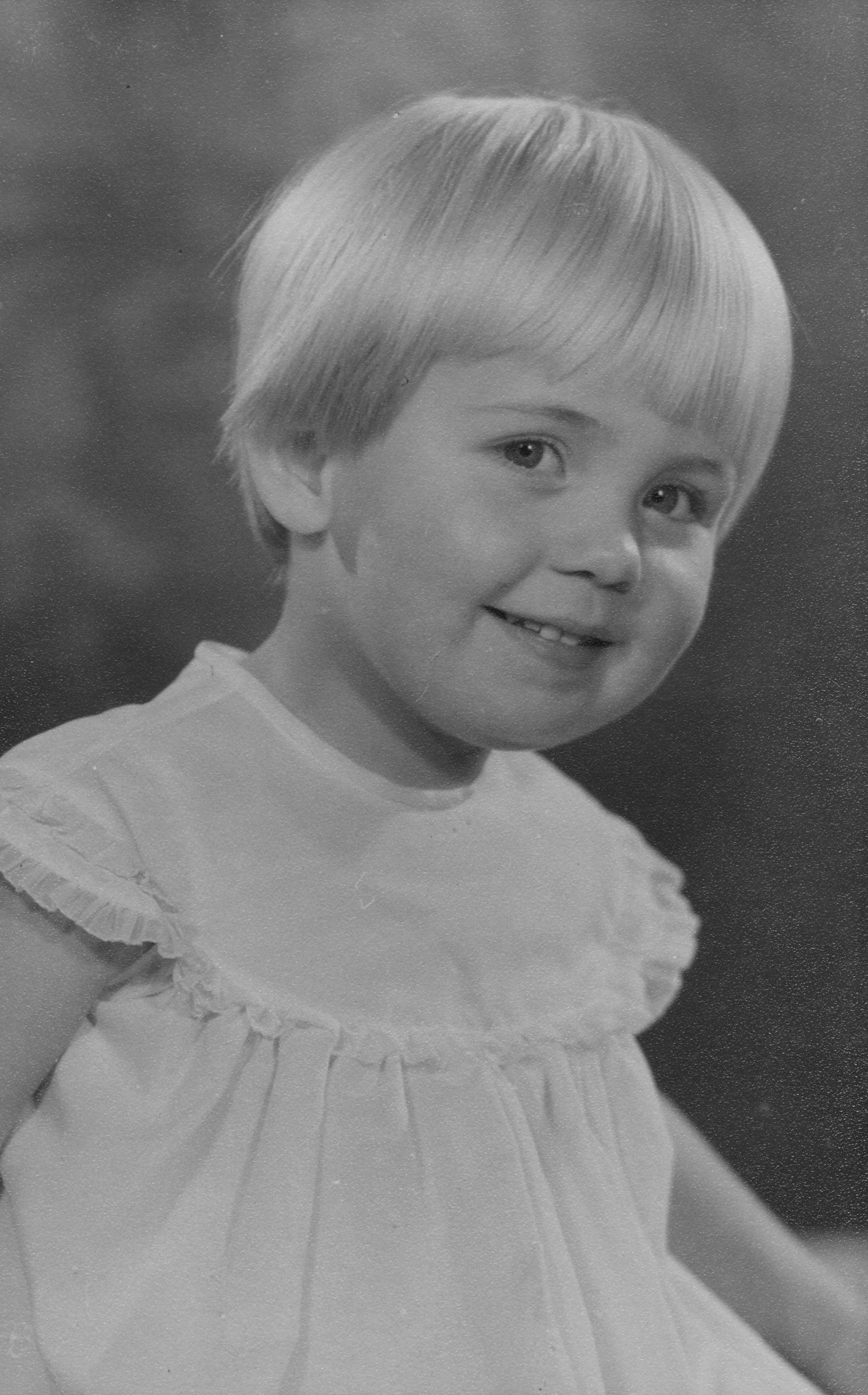
Elizabeth (Liz) Spreadbury was born on 1 March 1957 in Basra, Iraq. Her mother, Jane, then aged 25, had travelled overland to Iraq with a friend, and got a job in Baghdad. There she met her future husband, John, a pilot who had been seconded to the Iraqi air force. They married in Baghdad, and then moved to Basra where Elizabeth was born. In July 1958 there was a revolution in Iraq and the king was assassinated; Jane and her one-year-old daughter were flown back to the UK, later followed by John. They lived in married quarters in Ongar, Essex, where Liz's brother Paul was born in November of that year.
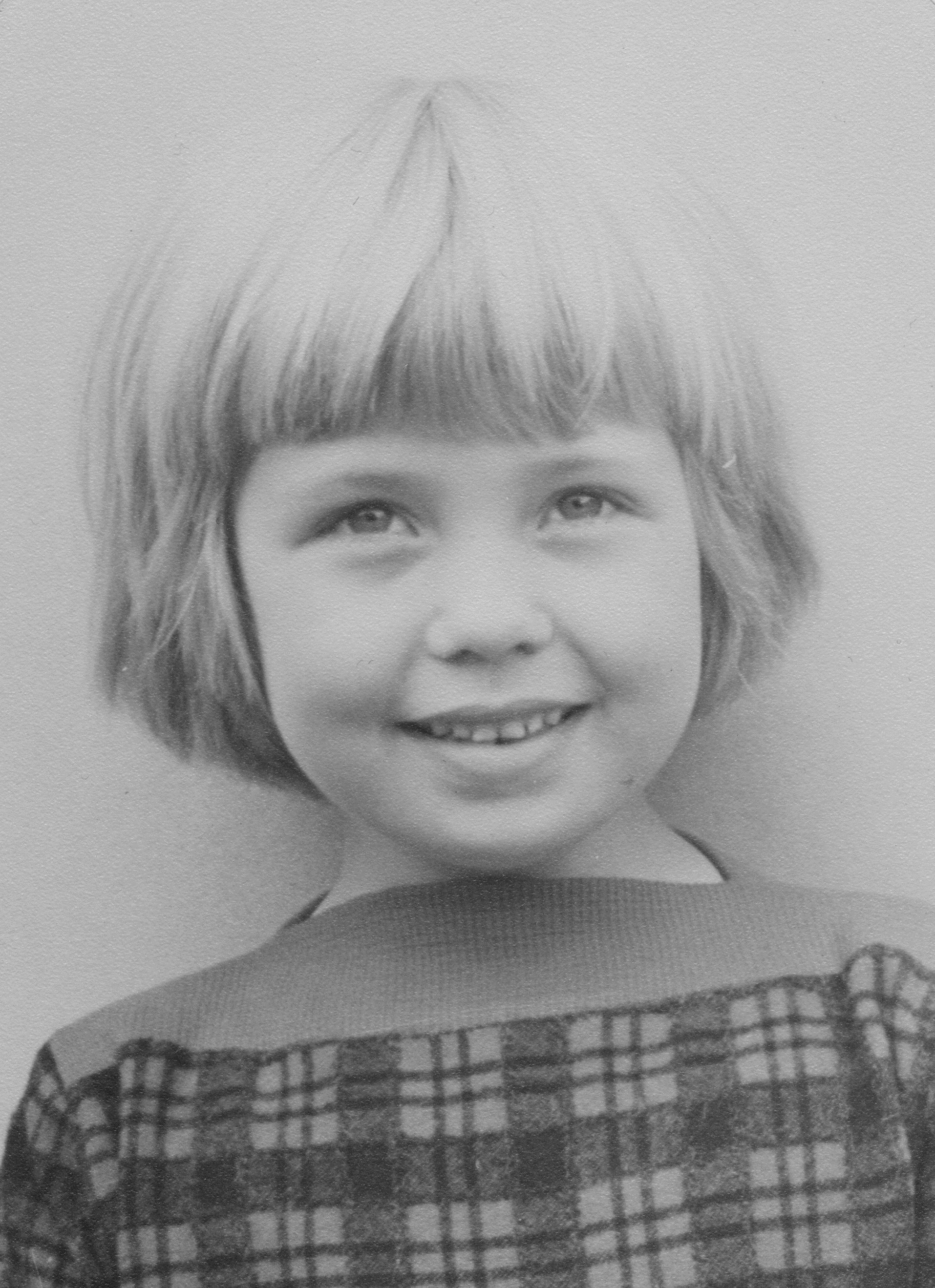
Over the next few years the family moved house several times, following John's RAF postings, culminating in a spell in South-East Asia. In 1966, John and Jane returned to the UK, and spent a few months in Ternhill, Shropshire. John then left the RAF and became a commercial helicopter pilot based in Middle Wallop, Hampshire; the family moved to nearby Andover. Elizabeth was clearly a very bright child, and could read from about the age of 3. Jacquelyn Beggs, who knew her between the ages of 10 and 15, remembers her as a 'big sister' (she was 4 years younger than Elizabeth) and as a "calm and self-contained child, and rather mature and grown-up". She had a guitar and would strum songs by Cat Stevens, whom she loved. One particular remark that has remained in the Jacquelyn's memory was the advice that, if ever a gorilla were to come into her bedroom at night, all she had to do was to shine a torch into its eyes and she would be 'safe' - a double-edged sword, she says, since up to that point she had never considered this possibility!
Schooling
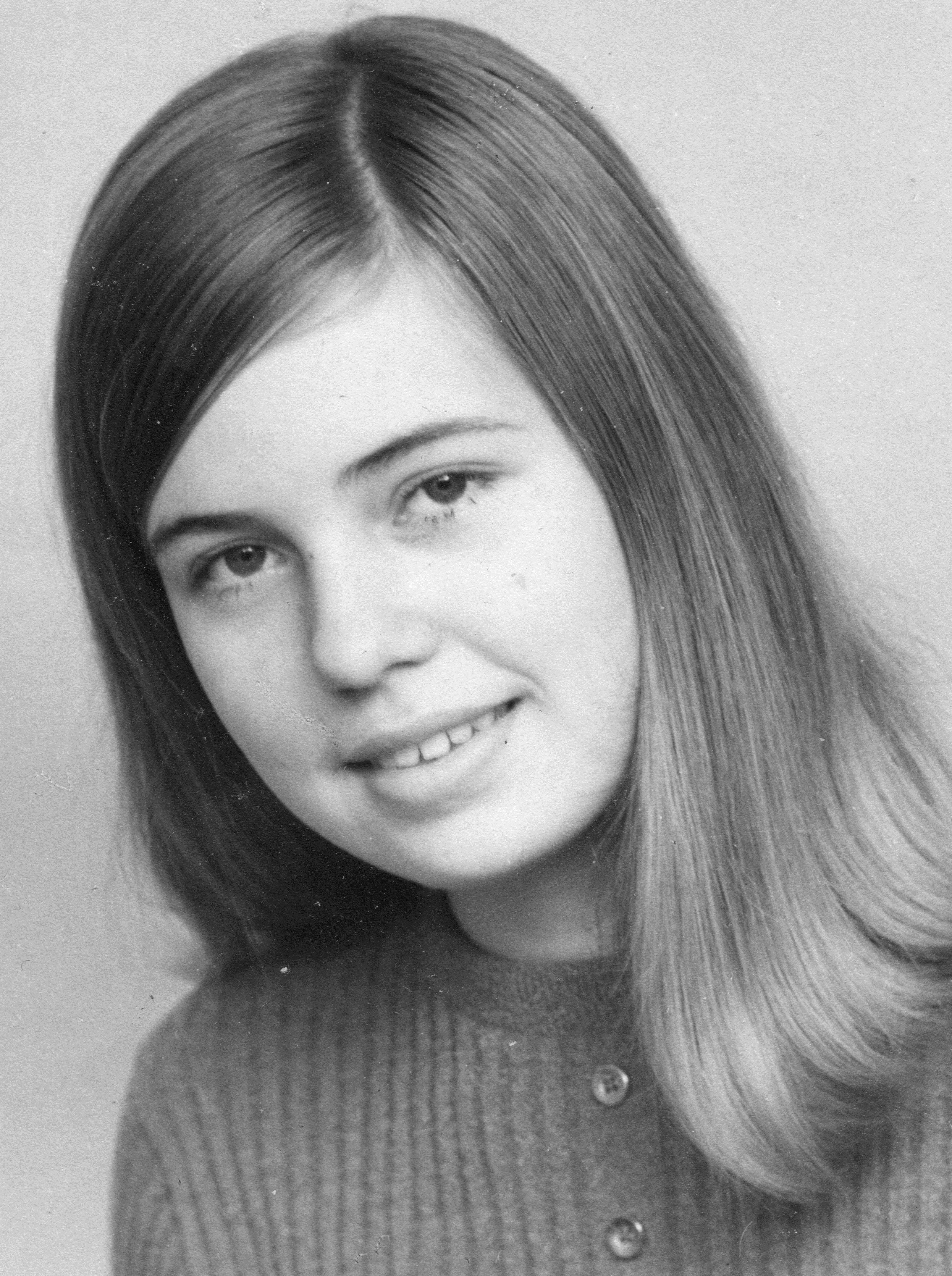
Following John's posting to Singapore when she was six years old, Elizabeth and her brother are believed to have been sent to boarding school, possibly in Swanage, Dorset. During school holidays they divided their time between staying with their paternal grandmother, and being flown out to their parents. Paul loved boarding school, but Liz hated it.
After her parents returned to the UK, Elizabeth went to primary schools in Ternhill and Andover and then, in 1968, to Andover Grammar School, where she did very well, coming either top or second in the class every year. A schoolfriend from that time, Carole Fry, remembers her as "really brainy and ... always reading". Apparently Liz and another mutual friend both played the trombone, and did duets together. She showed an early aptitude for art; Nick Parsons, a family friend, remembers a painting she did at the age of 12, one of the few things her mother kept until the end of her own life.
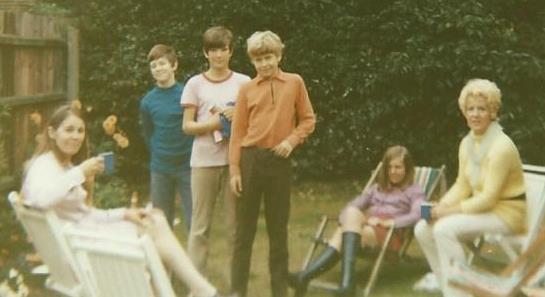
When Elizabeth was 14, John was again sent to the Far East - this time as a civilian pilot working for Bristow Helicopters - and the children were sent to Oldfeld, the boarding wing of Swanage Grammar School. Elizabeth sat GCE O-levels here in 1973. She does not seem to have made any close friends at Swanage; two of her contemporaries describe her as "quiet", although one added that she was popular, and had "a great sense of fun when she relaxed". She certainly joined in the school activities; the Oldfeld housemaster's report for 1972-73 highlights, among other things, "Liz Spreadbury's dancing" at a Christmas concert.
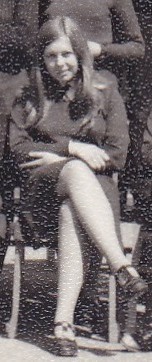
Liz was well known as an artistically gifted person; a picture of a school prizegiving shows her receiving a book called 100 Masterpieces in Colour. Nevertheless it seems she also had an interest in physics at this time, possibly inspired by the teaching of E.J. "Ted" Chambers, who saw Physics as a part of Natural Philosophy, and abandoned the normal 4th year syllabus to teach quantum mechanics, which was definitely not part of the O-level curriculum!
In 1974, Swanage Grammar School closed as part of the move to comprehensive education. Elizabeth had by this time completed a year of A-levels in Physics and Maths at Swanage; it is possible that she was also studying Art. She was transferred to Shaftesbury High School for Girls - again as a boarder - for the 1974-5 academic year; it seems she may have then dropped the physics, or perhaps it was found to be incompatible with her other subjects. At any rate, one former student remembers her attending an English A-level class in the upper sixth at Shaftesbury.
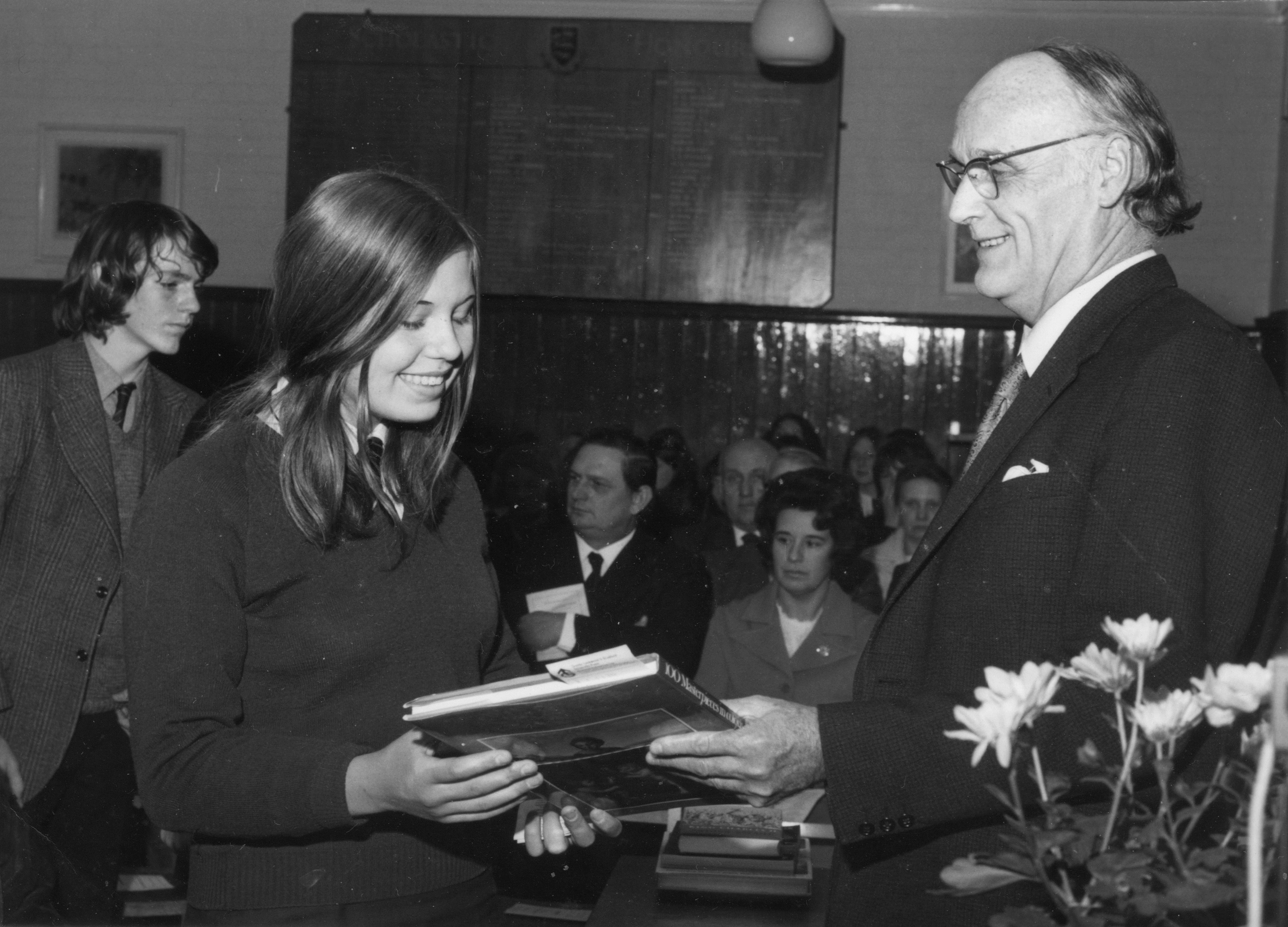
Prizegiving at Swanage Grammar School in 1973
|
Into the Wide World: Skye
Elizabeth would have been due to leave school at the age of 18, in summer 1975. As a bright and talented student, she would have been expected to go on to higher education, but it is not clear what A-level passes she achieved, or indeed, whether she completed any A-levels. There is a suggestion that she may have started a course at Glasgow School of Art but later "dropped out". If she did start a course then, it could not have lasted long, because it is known that towards the end of 1975 she was working away from home, at a fish processing factory at Lerwick in the Shetland Islands. Her mother's family had some connections with Shetland - a great-grandfather had lived there - but it seems unlikely that she went to "find her roots". She had also spent some time in Italy, using her artistic talents to the full by making copies of oil paintings and selling them. There is no clear evidence as to when this took place; it might have been a "holiday job" while she was still at school.
From Shetland, Liz got work on a Danish fishing boat. It was very rare at that time for a woman to do this sort of work; she had to talk her way onto the boat, with help from a friend at the factory. After waiting two weeks for the boat to leave, she spent a month at sea, and ended up in Hirtshals, in northern Denmark, bumping into her friend from Lerwick who had arrived on another boat. She returned to Inverurie but was soon off again to Glasgow, joining her new friend there; she stayed there for a while and then they travelled together to the Isle of Skye.
She was to remain on Skye, off and on, for several years, punctuated by at least one further foreign adventure - at The Hague in Holland, where she worked at an old people's home, and displayed an aptitude for languages by picking up Dutch very quickly - being able to make language-based jokes in the language after only two and a half months. (A fascination with language was in evidence during her schooldays, when she was fond of creating humorous "punny" nicknames for her friends).
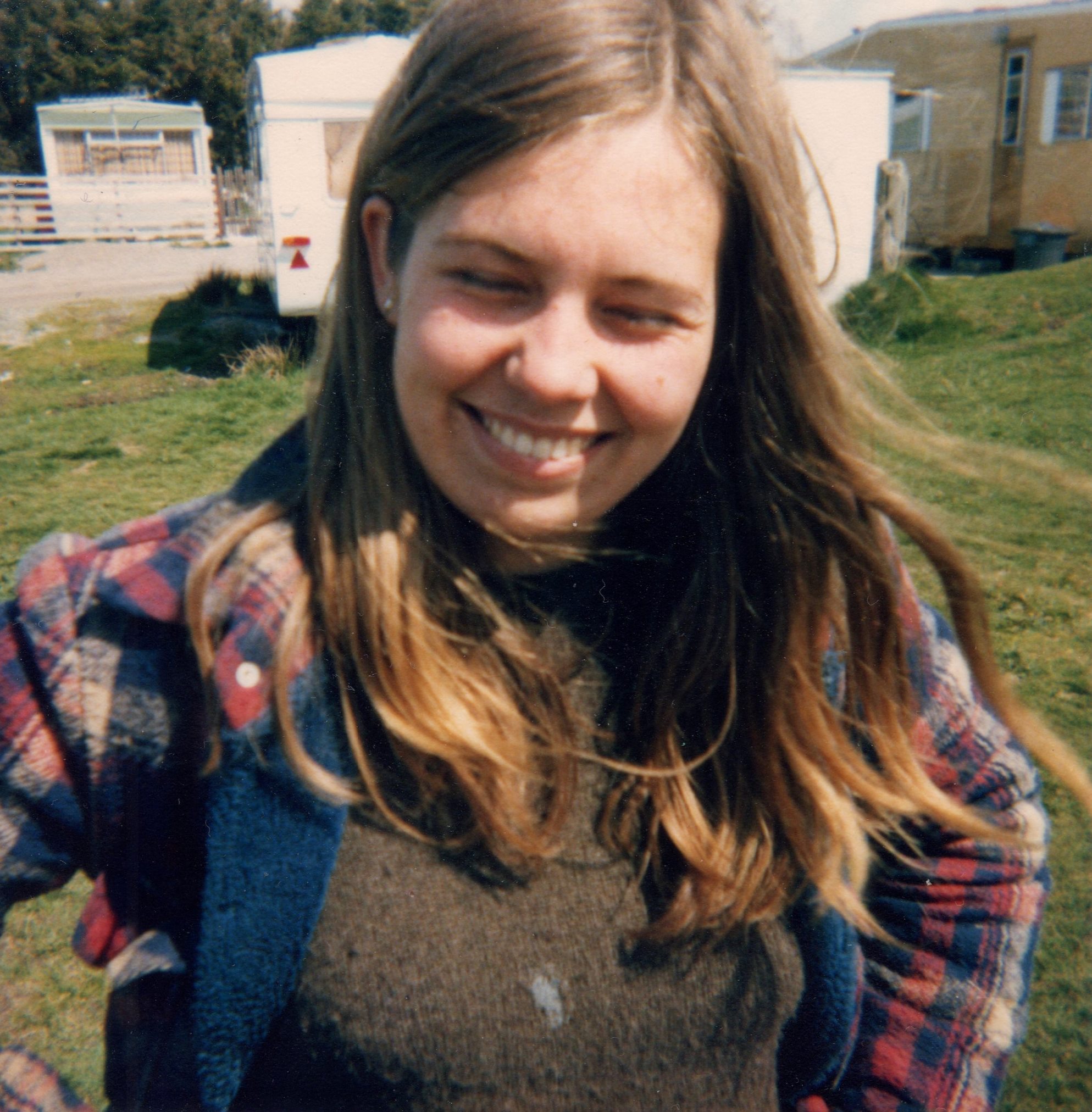
When on Skye, Liz lived mostly on a caravan site at Breakish, near Broadford in the south-east of the island, although she also lived at Torrin, Fiskavaig and possibly also Carbost. She mostly lived alone, although at one time she stayed in her friends' caravan, paying her "rent" in cheese! On another occasion she had to leave a house in which she had been staying because the landlord turned out to be a peeping Tom. All in all, Liz probably spent more time on Skye than anywhere else in her life, and it is the place where she is best remembered. She "got by" by doing odd jobs such as digging ditches and putting up fences, helping with lambing, and collating copies of the local paper. She also painted. Friends recall her as very fit and strong, and eager to work. Skye at that time was a haven for "drifters"; it was said that one could easily survive there - "you'll get by on Skye" as the saying went.
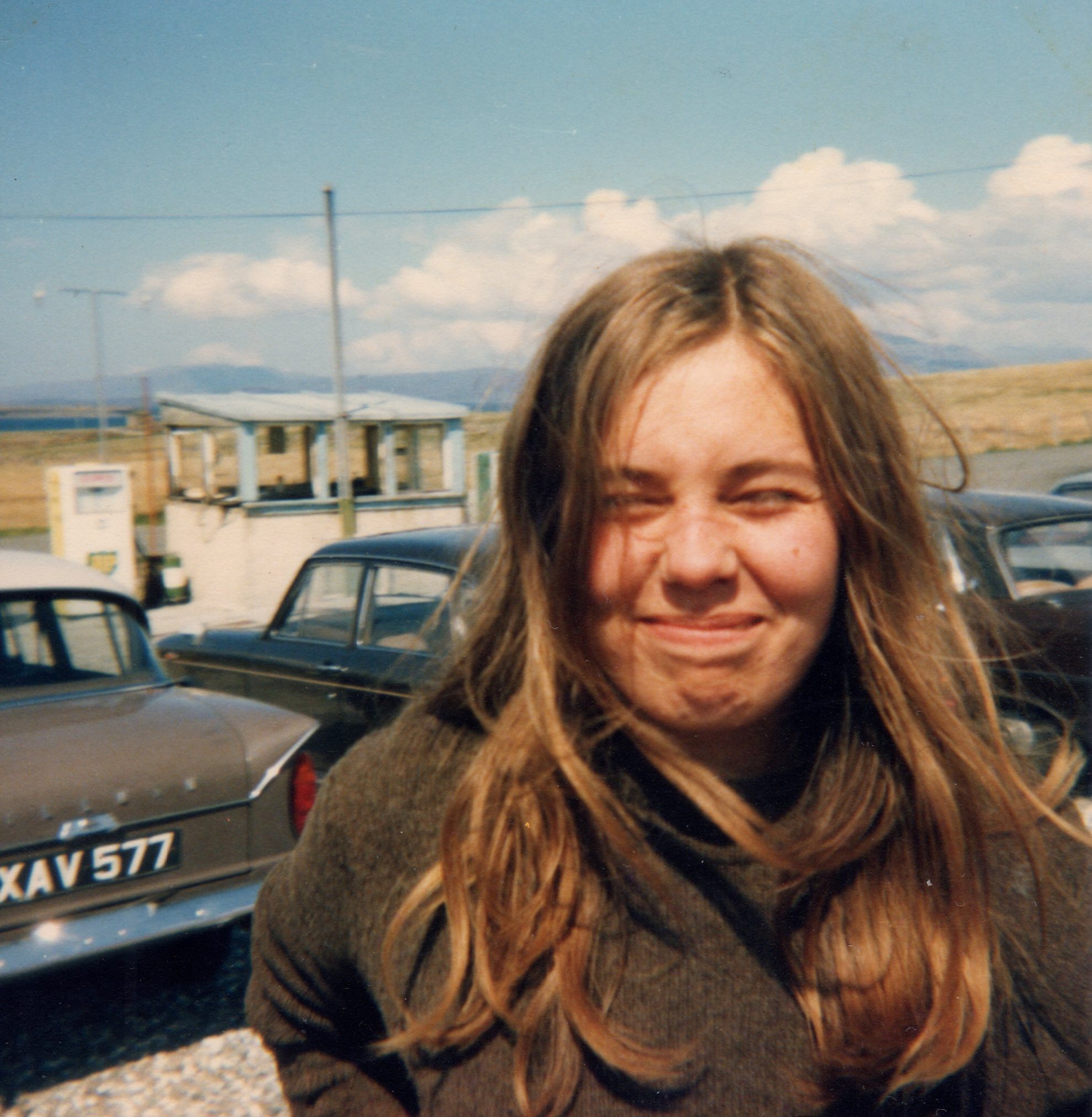
A theme that ran through all of her time on Skye was the collection of winkles (or wilks as the local dialect has it). It is a major industry in those parts, with large numbers of itinerant self-employed collectors (often based at the Breakish caravan site) selling to a buyer who travelled round the island. Liz used winkles to supplement both her income and her diet. Carel Goodheir recalls that in her later years on Skye, Liz was seen abseiling down the cliff at Ramasaig, on the west coast, to get to an inaccessible, winkle-rich beach.
There is a tendency to speak only well of the dead, and I have been aware of this in conducting my researches. But Liz was human, and had her faults; she was even described at one time as "a mess". There was a certain recklessness: she sustained a horrific injury whilst trying to cut wood with a Stanley knife because she didn't have a saw, and, because it happened to be the Sabbath, couldn't get one, and didn't want to wait. She also displayed signs of the kind of thoughtlessness sometimes seen in the young: she went camping, then abandoned the tent, triggering a wasteful search-and-rescue exercise when someone found the empty tent.
Luib Folk Museum
One of many projects Liz got involved in on Skye was the Luib Folk Museum. This was set up in 1978 by Peter MacAskill, a local entrepreneur who has also created at least two other museums on the island. The museum contained various agricultural implemements from the late 19th century, and was housed in an old "black house" - a thatched, single storey building with walls constructed of inner and outer layers of loose stone on either side of a central core of earth. Peter needed someone to create attractive displays for the walls and design the layout of the museum, and was put in touch with Liz by a mutual friend. As well as doing the design, artwork and displays, Liz also helped MacAskill and the curator, Maire MacInnes, to collect and clean the exhibits, and to thatch the building.
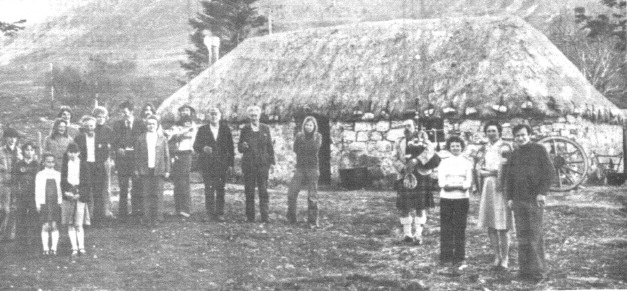
The museum became an established part of the "tourist trail" and was mentioned in many guides, such as the Rough Guide to Scotland. It attracted several coachloads of visitors per day in its heyday. However, visitor numbers to the island dwindled, especially following the outbreak of foot and mouth disease, and the museum eventually closed in 2000.
Elizabeth was proud of her part in creating the museum, and showed her parents round when they visited her. After several years of living a lifestyle that they no doubt found puzzling and disappointing, she must have been glad of some tangible result to show them which might win their respect.
Friendships and Love
Elizabeth is almost universally described by those who knew her as a very private and self-sufficient person, perhaps even something of a loner. Yet she did have friends. Carole Fry remembers playing with Liz after school, and went on holiday with the Spreadburys in 1971. However she also recalls that Liz "had a retiring nature", and may not have been easy to get to know, even then. The two lost touch after Elizabeth was moved to Swanage, and this story no doubt repeated itself with every subsequent upheaval.
On Skye, she made several friends, with whom she would often enjoy a drink at Sligachan or Sconser after a hard day's work. She kept in touch with some of them for years afterwards. After she started studying, her Skye friends noticed a big change in her: she was well dressed, with shorter hair, and on one occasion she arrived in a van (possibly to collect stored belongings) after passing her driving test. Her friends were amazed at the achievement she had made, in getting involved in one of the biggest scientific experiments ever, from such humble beginnings.
Jane Spreadbury believed - possibly to the end of her life - that Liz had never had a boyfriend. This was not true. Saskia Andrews, who met her in the late 1970s, remembers her as an atractive girl whose looks would not have escaped the notice of men - especially in a traditionally male environment such as a fishing boat. From her late teens to her mid-twenties, Liz did indeed have several relationships with men. At times, it seems that she may have found herself completely overwhelmed by her emotions; in about 1983 she told a friend that she had discovered that "there are worse things than loneliness". She seems to have made a conscious decision, at some point, to avoid further emotional entanglements, and it is possible that this coincided with the beginning of her career in physics.
She was strong enough to stick to this resolve, although there are signs that she found a solitary life hard to bear. Nevertheless, a colleague at CERN remembers that she had "formed an attachment" to an unknown young man there. The day after she died, he contacted the OPAL lab, asking after her, and had to be told the dreadful truth.
Family Tensions
In retrospect, it is easy to imagine the period on Skye and elsewhere to have been simply a sort of extended "gap year". But we must not assume that was the way Elizabeth saw it. At any rate, her parents - and in particular her father - were unhappy about the direction her life was taking at this point. Clearly an intelligent and able young woman who had grown up in an affluent, middle-class family would have been expected to have "loftier" aspirations than digging ditches on Skye. There are signs of a rift in the family; Elizabeth is said to have had a great deal of respect for her parents but possibly also found it difficult to relate to them. She was headstrong, with her own ideas about what she wanted to do. This would not have harmonised well with the military culture in which her father was immersed, and which continued even after he left the RAF.
Elizabeth found a new admiration for her father when he became involved in the Bristow helicopter pilots' strike in April 1977, following the sacking of a pilot who was a member of the British Airline Pilots' Association (BALPA). The virulently anti-union Bristow is said to have engineered the dispute in order to "take on" the union. For the pilots who worked there, standing on a picket line was a new and strange experience. They sought the support of the Scottish TUC and the Energy Minister, Tony Benn. Benn, together with the Employment Minister, Albert Booth, was sympathetic; he wrote in his diary that "Bristow has a real fight on his hands". Elizabeth was impressed that her father had taken this stand. After a seven week strike, an enquiry took place under Lord McDonald. John Spreadbury, however, never worked for Bristow again; instead he went to work for a Norwegian company, Helicopter Services AS, in Stavanger.
Interests and Life Choices
After several "adventures" on Skye and other places, Elizabeth was clearly beginning to think about the future; two people who knew her on Skye said that she seemed unsure about what she wanted to do with her life. Initially, although going to university was clearly an option, it was not one that interested her much.
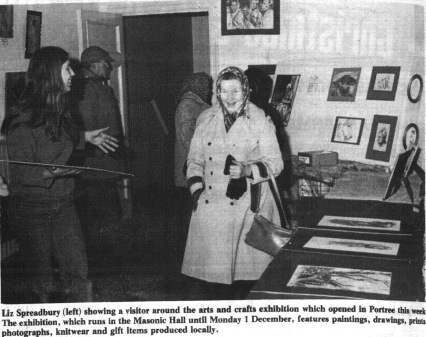
She would often involve herself in discussions on a wide range of topics, but would complain that the discussions were too superficial, not "deep" enough - "this is not really thinking".
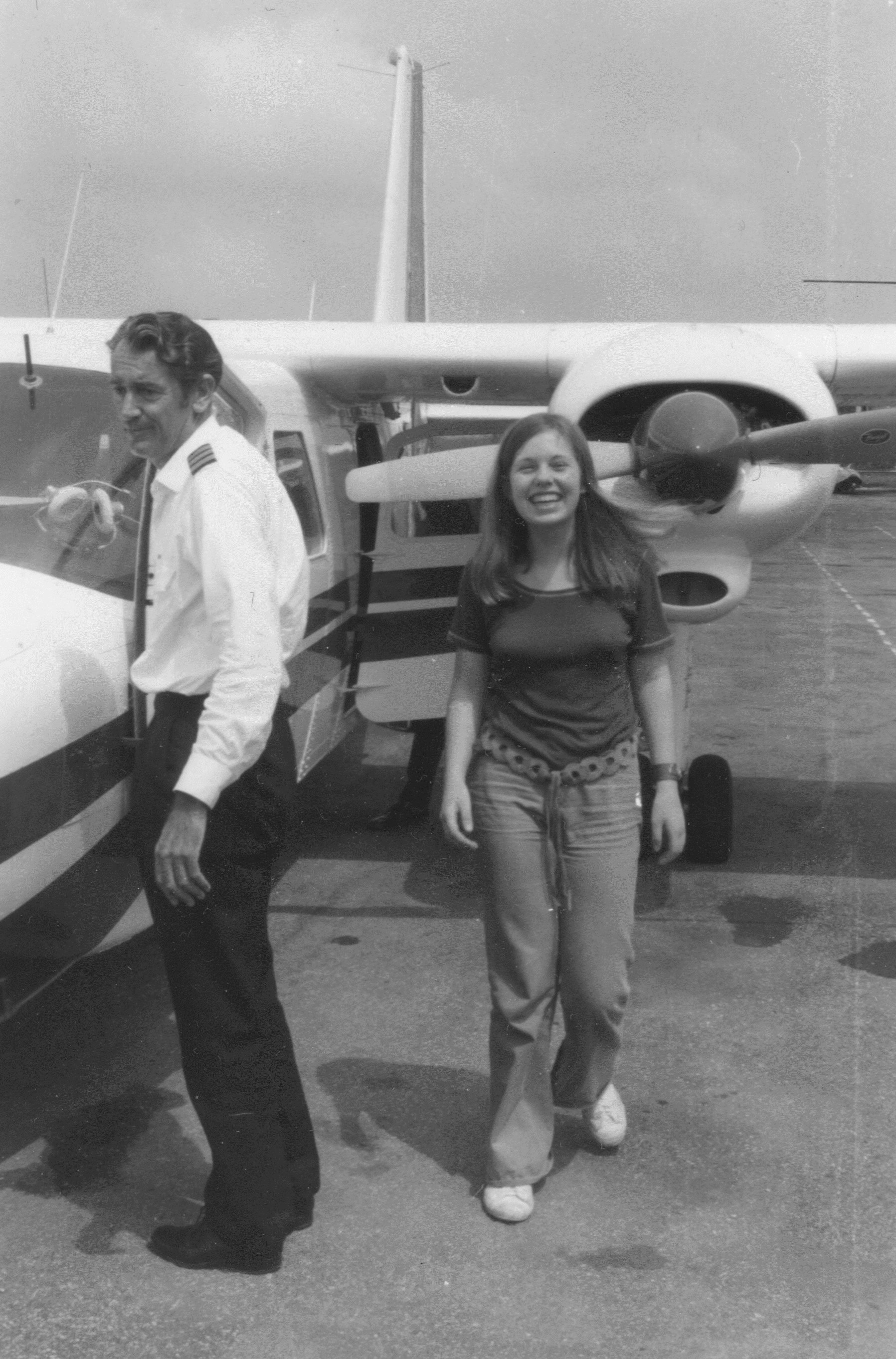
Of course, library facilities on Skye were somewhat limited; luckily, Liz was able to draw on the literary resources of Michael Taylor, a retired museum curator who had a large private library and would lend his books to friends, priding himself on choosing the right book for the right person. One that he remembers lending to her was Christopher Logue's poetic drama, the Patrocleia. In return, she looked after his croft at Ard Dorch, near Luib, when he was away from the island. Sarah Starmer, the daughter of friends on Skye, recalls that, during one of these stays in Michael's croft, Liz cooked a 6 course meal for her and her family, "with clear soup and egg whites and all". This would have been quite a departure for Liz, whose diet tended to revolve around simple meals such as baked potatoes and beans, or cheese on toast - and winkles, of course.
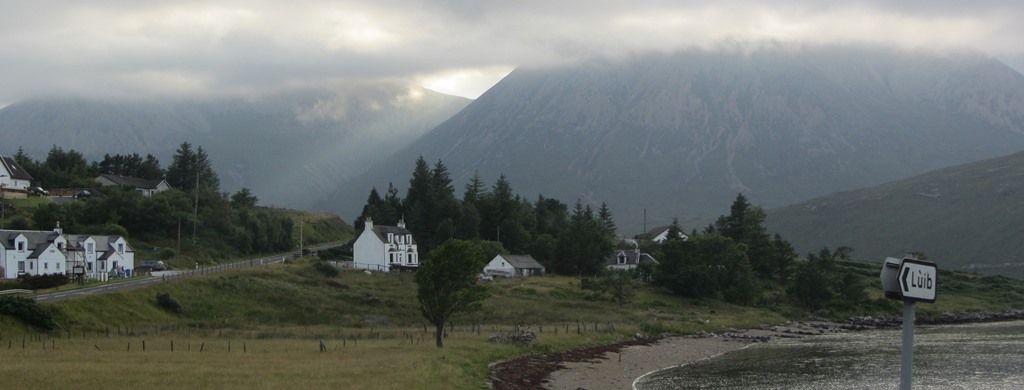
Liz loved the company of children. At CERN she enjoyed playing with the 3-year-old son of a colleague; it is said that she had "a wee bit of a child in her". Sarah Starmer remembers doing maths puzzles with her when she was about ten or eleven. Liz's enthusiasm clearly helped to nurture Sarah's growing interest in maths, and when I talked to her she had just completed an Open University (OU) degree in the subject, which she might not have done without such encouragement at an early age.
It is said that the skies in that part of the world are very clear, and unpolluted by street lights, and in the winter one can see the Northern Lights; this may have contributed to her growing interest in astronomy. At around the same time, she is said to have watched an OU science broadcast while at a friend's house and found that it "directly spoke to her". Maybe she was now rediscovering the "physics bug" that she had caught in the fourth form at Swanage Grammar School; and here perhaps was a way of satisfying her quest for really deep, fundamental thought.
In February 1983 she embarked on an OU course, S271 (Discovering Physics) - the basic second level physics course. By good fortune her tutor for this course was Jocelyn Bell Burnell, the well known astrophysicist who had discovered pulsars in 1967. Although Jocelyn never met Elizabeth - all communication being either by post or telephone - she could tell that this was a very bright and ambitious young woman. At least part of this course was done while she was still on Skye; Jocelyn remembers an address on the island, possibly Carbost.
University
The following year, Elizabeth took the OU module MS283 (An Introduction to Calculus). However, she must have decided that distance learning was not for her, and in 1985 she successfully applied to University College London (UCL) for a BSc place in Astronomy and Physics. She had had to spend some time beforehand completing the physics A-level that she had abandoned a decade earlier, only to be given the wrong date for the exam and miss it. Luckily, Bell Burnell stepped in and persuaded UCL to offer her the place anyway; she told them that "the physics she had studied with me was far in advance of A level". She may by now have been living in Edinburgh - friends remember visiting her there, but could not recall why she had gone there, except that it had something to do with her "new life" in physics. However, at some point she must have returned to the family home - now in Winterslow, near Salisbury - as a fellow-student remembered that she had had a job at the biological research station at nearby Porton Down, possibly with her mother.
Three months before she was due to start her degree at UCL, Liz's brother died of an asthma attack whilst on holiday in Israel. She seems not to have talked about this to her new friends at university.
According to some of her contemporaries on the course she was "a very single-minded student who was totally absorbed by her studies"; "pleasant and hard-working", and "conscientious". It is said that she always got top marks; one of her lecturers confirmed that she "was certainly one of the best in the class", and a personal tutor added that she was "very easy and pleasant to talk to". She was, of course, ten years older than most of the other students; perhaps because of this, she is also described as not having socialised much with the others. Sarah Evers, a fellow-student who shared Elizabeth's liking for coffee and roll-your-own cigarettes, and would often chat with her in the cloisters between lectures, remembers her as "intense"; she wanted to know "what's happening in the universe". Her interest went beyond the physics and was perhaps bordering on the mystical.
Another fellow-student, Alice Breeveld (née Dixon), recalls that she especially enjoyed quantum physics. She wanted to find meaning, order, and beauty in the universe. Nick Parsons also remembers remarks she made about the beauty of science; he and Liz would go for walks in the Wiltshire countryside, where "her appreciation of beauty and fascination with the natural world was very evident". She was also interested in the history of science: at the beginning of the course, a tutor asked the students to write an essay about a favourite book, and Liz chose Arthur Koestler's The Sleepwalkers, a history of science from the ancient Greeks to Newton.
As a student of Astronomy and Physics, Elizabeth attended regular sessions at the University of London Observatory at Mill Hill. Denis Timm, a demonstrator at the observatory, recalls his first impression of her at an early session which was meant to teach the students to take and develop photographs: she "disappeared off with the camera, and when the other students had already returned we started to look for her. She was in the dome of the large refractor. Other students had taken photos of this telescope, but Liz was doing something different. She was taking a series of photos which she could use for a montage ... The end result was superb." Here she was clearly combining her new-found interest in astronomy with her artistic tendencies, to good effect.
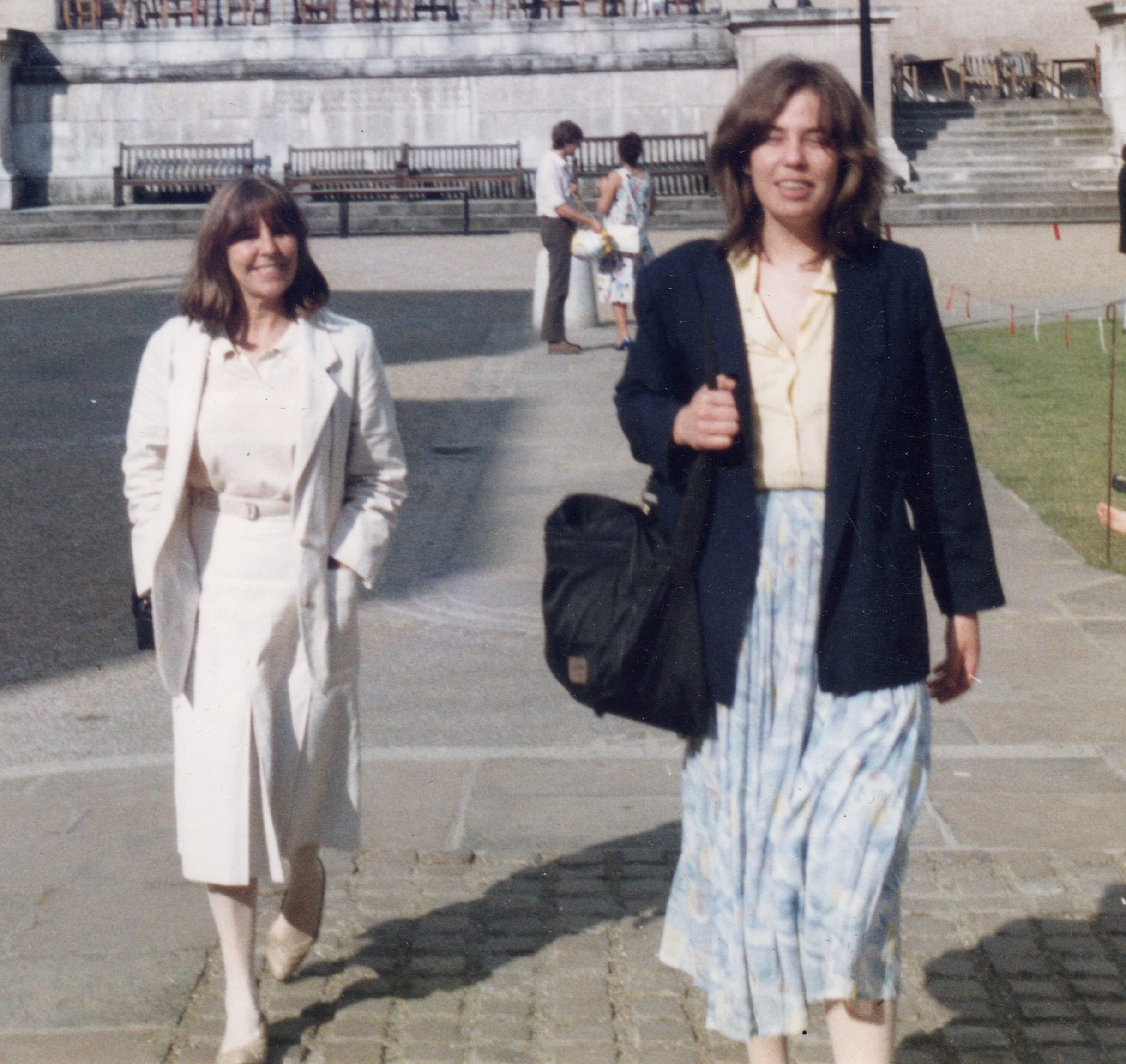
Nowadays, a PhD in HEP at UCL commences with an intensive period of formal training consisting of taught courses which take place in the first term and are attended by students from all the University of London colleges. During this period students do very little other than these taught courses. It would have been similar in Elizabeth's day. Once the taught courses are out of the way, a student chooses a research project (if he or she has not done so already) and gets stuck in. For Elizabeth, this involved going to CERN in Geneva, where the Large Electron-Positron Collider (LEP) - forerunner of the Large Hadron Collider - was being built. Elizabeth's experiment, OPAL, was one of four detectors located at points around the 27 km ring. Her thesis project would have evolved out of this, but in the event she did not have time to home in on a topic. It is likely, however, that it would have involved observation by OPAL of the production of Z0 bosons (which had been discovered in 1983). As the collider energy changes, the rate of production of these particles changes, and the relationship between these two quantities - which determines the sharpness of the energy peak - is related to the number of ways the Z0 can decay. Since the experiment sees some of the decays directly, it can measure the rate of "invisible" decays due to the production of neutrinos; this determines how many kinds of neutrino could have been produced at the Big Bang. As one of the fundamental measurements in cosmology, this would have been exactly the sort of thing Liz would have hoped to have in her thesis.
CERN
Elizabeth seems to have spent two periods at CERN. During 1989, the OPAL detector was being assembled and installed in readiness for the switch-on of LEP, scheduled for that autumn. She worked on such things as the installation of the huge number of cables that had to be attached to the detector, which involved getting into some fairly small confined spaces, and often getting covered in oil in the process.

She liked to work at night, and was often on site even when not required to be. On one occasion, fairly near the deadline, this proved beneficial to the OPAL group, as Andy Charalambous recalls. A group of physicists and engineers (not including Elizabeth) was preparing for the final stage of the process, where cables had to be attached to the detector in the correct sequence.
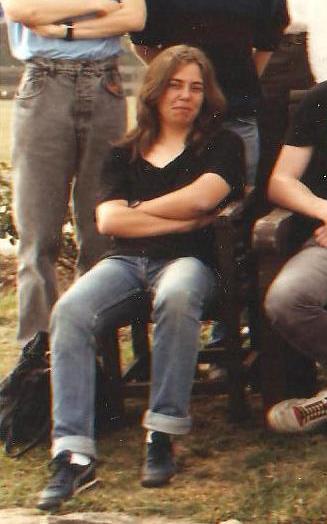
After the successful pilot run of LEP at the end of August, Elizabeth returned to the UK to take part in the annual High Energy Physics Summer School organised by the Rutherford Appleton Laboratory. Here she would meet all the other students in the country who were at the end of their first year of a HEP PhD. However, once again she seems not to have interacted much with the others.
She was described by one of the lecturers as "a good participant - solid rather than perhaps brilliant", but few of her fellow-students could remember anything about her, and one of the few who did described her only as "very quiet and withdrawn". Yet Brian Anderson from UCL, with whom she worked at CERN, said she was "chatty" and did not find her to be particularly reclusive.
CERN would shut down during the winter to save electricity, and this was the time when upgrade and repair work could be carried out. OPAL was being upgraded, including recabling to make it easier to open up the detector in future. It was whilst working on this upgrade that Elizabeth was knocked down and killed on 6 February 1990, while cycling back to her flat in Geneva for lunch.
Liz's Legacy
After Liz's death, her parents donated her physics books, and the insurance money arising out of the accident, to UCL, which set up the Elizabeth Spreadbury Library in a small meeting room at UCL used by the High Energy Physics group. A fund was set up to maintain the library and buy books; it now has about 400. An annual Elizabeth Spreadbury Lecture was also instigated, covering topics chosen to reflect Liz's interests; speakers over the years have included Jocelyn Bell Burnell, John Ellis and Martin Rees; also two Directors General of CERN: Christopher Llewellyn Smith and Rolf Heuer.
In April and May 1990, the OPAL collaboration dedicated research papers to Elizabeth's memory.
John Spreadbury died in 2011. Jane died in 2013.
Who was Elizabeth Spreadbury?
Elizabeth touched many of the lives around her. Peter MacAskill remembers her "beautiful smile" and the way her presence was felt when she entered a room. For Denis Timm, "it wasn't just that she was clever and bright - she was all of that, but she also had that indefinable quality which doesn't come around too often". Michael Taylor describes her as "a very likeable person. She had an inner strength about her. She was very, very, not wishy-washy". To Nick Parsons, her visits were "like a breath of fresh air". For Maire MacInnes she was "such a character ... she'd get stuck into anything". Her mother's last words to me were that Liz was "very single-minded; fiercely independent".
It has not been possible to establish a continuous timeline for Liz's life; there are many gaps. After her death, her parents, in their grief, seem to have obliterated virtually all documentary evidence of her existence. Whether this was done consciously or not, it was, I feel, what their daughter would have wanted. She was a private person. She would not want the details of her life to be raked over and inspected by any old would-be biographer.
In the end, Elizabeth remains an enigma. Her aunt Georgina once said to her mother that she didn't really know her very well; the response was "Nobody does". Her life was compartmentalised: people were only admitted to the parts she wanted them to see, and there may have been some parts of it that no-one was admitted to.
As Carel Goodheir put it when asked if a certain acquaintance would be worth contacting:
"I don't think he knew her that well, but then ... which of us did?"
Acknowledgements:
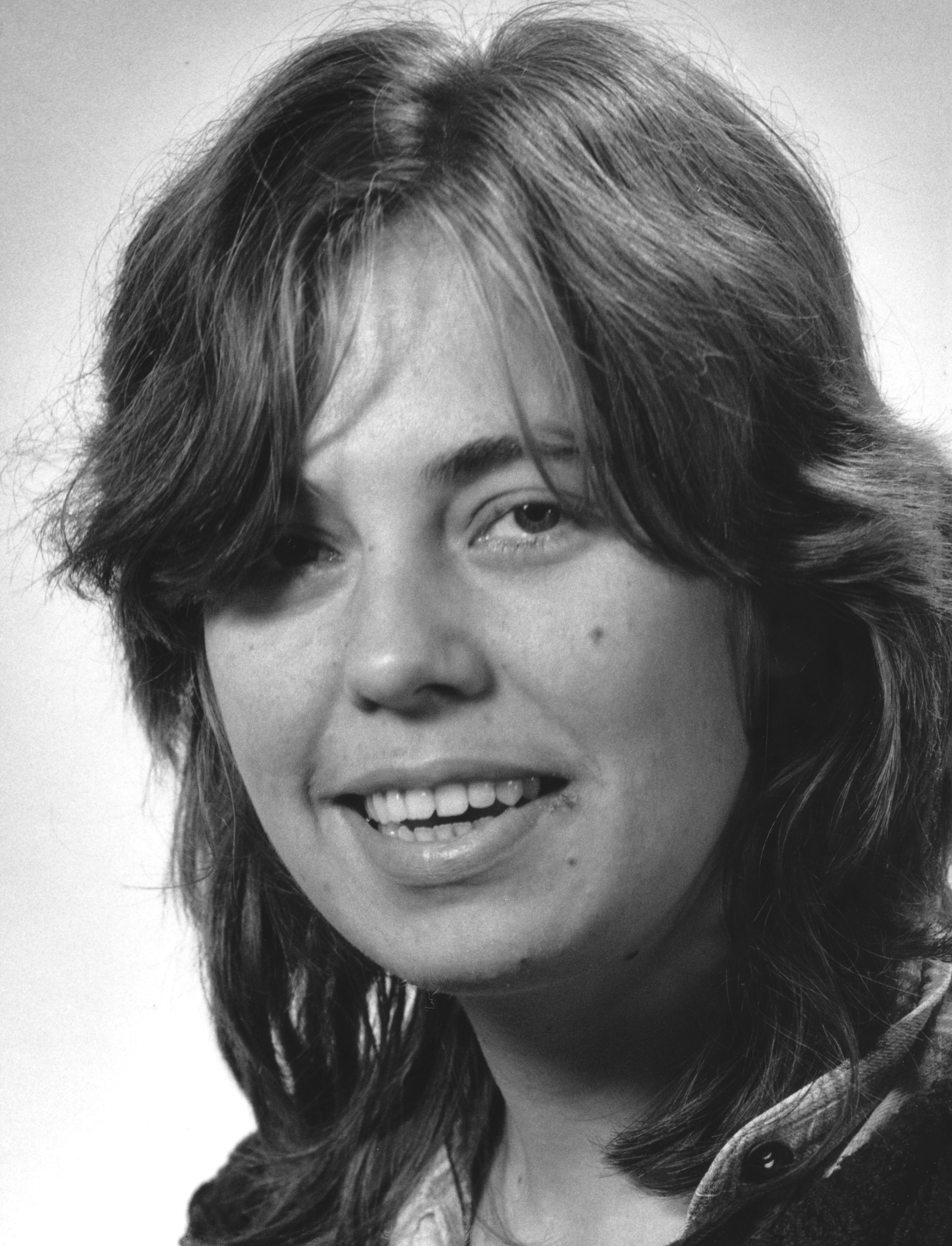
For help with the research: Malcolm Batt (Swanage Grammar School Assoc); RAF Museum, Colindale; Tracy Rodell (Shaftesbury School); Michelle Aitken (OU); Friends Reunited; Kate Heyworth (UCL); Mike Dworetsky (UCL); Tony Benn Diaries 1977-80 (Arrow 1990).
Photos: Georgie and Vic Rawlings; Mark Wintle; Carel and Ruth Goodheir; West Highland Free Press; Jim Grozier; David Miller; STFC; UCL HEP.
Lastly for the generosity of John and Jane Spreadbury, which has kept their daughter's name alive after her death.
Click here for Jim's blog about writing the biography. If you can supply any information to fill the gaps, please email the author. Originally published: September 2013. Last update: April 2015.
